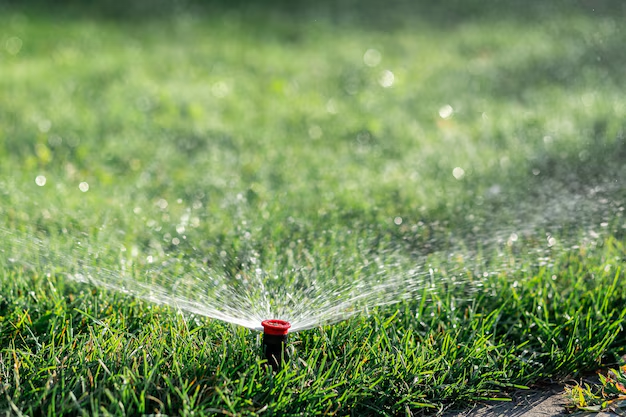
As climate change and rising temperatures affect daily life, homeowners are becoming more conscious about how they use water. Garden, while beautiful and relaxing, can often consume large amounts of water if not maintained wisely. The good news is that there are simple and practical ways to create a water-saving garden without losing its beauty or charm.
In fact, adopting water-smart gardening practices not only saves money on water bills but also contributes to sustainability and environmental protection. Here are some expert-approved water-saving garden tips to help you maintain a lush, green space while conserving one of our planet’s most precious resources.
One of the most effective water-saving garden strategies is to grow native plants or drought-tolerant varieties. These plants are naturally adapted to local climate conditions, meaning they need less water to thrive. For example, succulents, lavender, rosemary, and ornamental grasses are hardy choices for many regions.
By designing your garden with these plants, you reduce the need for daily watering while still enjoying a vibrant, colorful landscape.
Not all plants have the same thirst level. By grouping plants according to their water needs, you avoid overwatering or underwatering any section of your garden. This method, known as hydrozoning, ensures that water-loving plants are clustered together near irrigation points, while low-water plants are placed in drier areas.
This approach not only saves water but also makes garden care easier and more efficient.

Timing plays a major role in water efficiency. Experts recommend watering your garden early in the morning, ideally before sunrise. At this time, temperatures are cooler and winds are calmer, which reduces evaporation. Watering during the afternoon heat leads to water loss, while evening watering may encourage fungal growth.
A simple shift in your watering schedule can save thousands of liters of water annually.
Mulch is a gardener’s best friend when it comes to water-saving. Adding a layer of organic mulch—such as wood chips, straw, or shredded bark around plants helps retain soil moisture, keeps roots cool, and prevents weeds from competing for water.
Mulching can reduce water needs by up to 50% while improving soil health over time.
Traditional sprinklers waste water by spraying it into the air, where much of it evaporates or misses the roots. A drip irrigation system, however, delivers water slowly and directly to the base of plants. This ensures efficient water use and encourages deep root growth.
Though it may require an initial investment, drip irrigation pays off in the long run by cutting water bills and supporting healthier plants.
Why let rainwater go to waste when it can nourish your garden? Installing a rainwater harvesting system or even a simple rain barrel allows you to collect runoff from rooftops. This free and natural water source is perfect for watering lawns, plants, and even potted flowers.
In many regions, rainwater harvesting is encouraged as part of eco-friendly home design.
Grass lawns may look appealing, but they are among the biggest water guzzlers in a household. Consider replacing traditional turf with ground covers, gravel landscaping, or artificial grass. If you prefer to keep some grass, choose low-water turf varieties and reduce the overall size of your lawn.
This small change can drastically lower your garden’s water usage.
Another clever water-saving garden tip is to reuse greywater lightly used water from sinks, bathtubs, or washing machines. With the right filtration systems in place, this water can be safely redirected to irrigate your garden.
Even without advanced systems, simple practices such as using leftover water from cooking (once cooled) on plants can make a difference.

Healthy soil is the foundation of a water-efficient garden. By enriching soil with compost and organic matter, you improve its structure, allowing it to hold more water. This reduces the frequency of watering while ensuring plants get steady moisture and nutrients.
Checking soil moisture regularly before watering also helps avoid unnecessary overwatering.
Technology is transforming modern gardens. Smart irrigation controllers use weather forecasts, soil sensors, and timers to water plants only when needed. These devices prevent waste and ensure plants get just the right amount of hydration.
For busy homeowners, these tools offer both convenience and sustainability.
While each of these tips may seem small on its own, together they can make a huge impact. A water-saving garden not only helps households lower bills but also plays a role in addressing global water scarcity. According to environmental experts, even modest reductions in water use at the household level can lead to significant community-wide benefits.
By embracing water-smart practices, gardeners become part of the solution to a worldwide challenge. More importantly, these methods prove that sustainability and beauty can go hand in hand.
Creating a water-saving garden is not about sacrificing greenery or comfort—it’s about making smarter choices. From planting native species and mulching to using smart irrigation systems, there are countless ways to reduce water consumption without losing the joy of gardening.
As droughts and water shortages become more frequent in many parts of the world, homeowners who adopt these strategies are setting a positive example. With just a little effort and creativity, you can have a garden that thrives beautifully while respecting the planet’s resources.
READ MORE:- Shobha Realty Launches Its Most Luxurious Project Yet—Full Details Inside 2025
